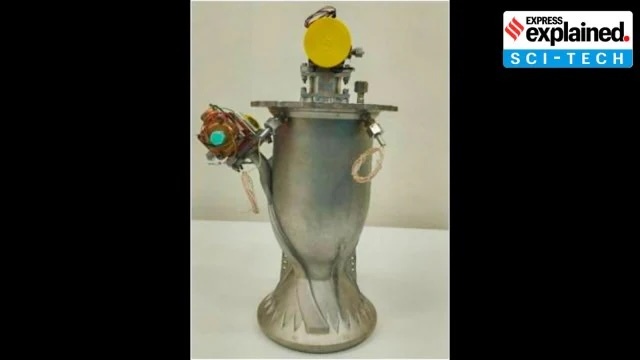The engine, PS4, which is used as the engine for the fourth stage of Polar Satellite Launch Vehicle (PSLV), was redesigned by ISRO for production using 3D printing. (Photo: X/@isro)
Indian Space Research Organisation (ISRO) on Thursday (May 9) successfully tested a liquid rocket engine made with the help of additive manufacturing technology — commonly known as 3D printing.
The engine, PS4, which is used as the engine for the fourth stage of the Polar Satellite Launch Vehicle (PSLV), was redesigned by ISRO for production using 3D printing.
Here is a look at what 3D printing is, how it works, and why ISRO made an engine using this technology.
What is 3D printing?
3D printing is a process that uses computer-created design to make three-dimensional objects layer by layer. It is an additive process, in which layers of a material like plastic, composites or bio-materials are built up to construct objects that range in shape, size, rigidity, and colour.
How is 3D printing done?
To carry out 3D printing, one needs a personal computer connected to a 3D printer. All they need to do is design a 3D model of the required object on computer-aid design (CAD) software and press ‘print’. The 3D printer does the rest of the job.
3D printers construct the desired object by using a layering method, which is the complete opposite of the subtractive manufacturing processes. Think about the great Italian sculptor Michelangelo making his masterpiece sculpture David. He famously carved out the colossal statue from one single block of marble. This is an ideal example of the subtractive manufacturing method.
3D printers, on the other hand, build from the bottom up by piling on layer after layer until the object looks exactly like it was envisioned. “The (3D) printer acts generally the same as a traditional inkjet printer in the direct 3D printing process, where a nozzle moves back and forth while dispensing a wax or plastic-like polymer layer-by-layer, waiting for that layer to dry, then adding the next level. It essentially adds hundreds or thousands of 2D prints on top of one another to make a three-dimensional object,” a report by Built In, an online tech news outlet, said.
Notably, these machines are capable of printing anything from ordinary objects like a ball or a spoon to complex moving parts like hinges and wheels.
“You could print a whole bike – handlebars, saddle, frame, wheels, brakes, pedals and chain – ready assembled, without using any tools. It’s just a question of leaving gaps in the right places,” The Independent said in a report.
Why did ISRO use 3D printing to build the PS4 engine?
The technology helped ISRO bring down the number of parts in the engine from 14 to a single piece. The space agency was able to eliminate 19 weld joints and saved 97% of raw material. It also reduced the overall production time by 60%.
Quelle: The Indian EXPRESS

